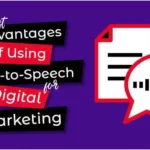
As 2024 comes closer, the online world is changing quickly, changing the way businesses reach their customers. Digital marketing is ready to bring in new changes. So, what’s coming in 2024? Let’s look at some expected big trends in digital marketing.
Adapting to the Mobile-First
Nowadays, people use their phones for everything, from buying things to chatting to looking up stuff. This isn’t a mere trend, it’s the new normal. Thus, it is necessary for businesses to ensure digital strategists work well on phones. You can find out more about this at https://blog.partners1xbet.com/mobile-affiliate-marketing/. Mobile optimization isn’t just about responsive design anymore. It involves:
- Speedy loading times to retain user interest.
- Intuitive interfaces for easy navigation.
- Content that fits comfortably on smaller screens without sacrificing quality.

The Power of Artificial Intelligence (AI)
Artificial Intelligence isn’t a new term for most marketers, but its potential keeps expanding. AI tools and algorithms are helping businesses to:
- Predict Consumer Behavior. AI can analyze patterns to predict future sales or product interest.
- Automate Customer Interactions. Chatbots powered by AI can handle inquiries without human intervention.
- Personalize User Experience. Using data, AI can create a tailored browsing experience for visitors.
Video Content Continues to Captivate
Platforms like TikTok, YouTube, and Instagram Reels are very popular. But now, short videos are becoming more liked, especially by young people. They prefer real stories over flashy ads. So, brands should change their video plans to make content that young people relate to.
The Age of Augmented Reality (AR)
Augmented Reality (AR) combines the real and virtual worlds for a special experience. It’s not just for games now. For example, clothing brands let users virtually “try on” items using AR. Also, 3D ads make products seem real, making ads feel more lifelike.
Data-Driven Decisions
Data has become the backbone of effective digital marketing strategies. With advancements in technology, data collection and analysis have become more streamlined. Brands are using insights to:
- Understand Consumer Behavior. Recognizing patterns helps in product development and marketing strategy formulation.
- Optimize Marketing Campaigns. Real-time data can guide tweaks in campaigns for better results.
- Forecast Trends. Analyzing data helps brands stay ahead by anticipating market shifts.
Many people are using voice search on devices like smartphones. They often use voice helpers like Siri, Alexa, and Google Assistant. So, brands need to make their content easy to find and understand through voice search.
The Importance of Community Building
Today’s customers want more than just things to buy. They want to feel part of a group. Brands are making online groups for this. Through websites, social media, or forums, these groups let people talk and share. This helps make customers loyal and gives companies direct feedback from them.
E-commerce Evolution with Social Shopping
Social media is not just for chatting anymore. Features like Instagram Shopping and Facebook Marketplace let people shop on them. Brands can now sell products directly on these sites, making it easy for users to find and buy things.
People are caring more about the environment and doing the right thing. It’s not just a trend, businesses are making it central to what they do. Brands will need to show they care too. Future online ads will highlight green habits, long-lasting products, and how brands are making good changes.
Emergence of Micro-Moments
Google came up with “micro-moments” to talk about times when people quickly check their devices for answers. This includes moments like “I want to know,” “I want to go”, “I want to buy”, and “I want to do”. Tapping into these moments requires brands to:
- Be there. Ensure you’re present in these critical touchpoints.
- Be relevant. Offer the right content at the right time.
- Be quick. Time is of the essence in these fleeting moments.
Diverse Content Types Are Taking Center Stage
While written content remains important, there’s a push towards more diverse content forms. Podcasts, infographics, webinars and live videos are now important for online marketers. It’s crucial to know which type works best to share your message and connect with your viewers.
User Generated Content
Trust is important. People today trust what others say about a product more than what the brand says. User content, like reviews and pictures, gives brands a real way to show they’re trustworthy. Brands should support and share this user content.
- Strengthen community ties.
- Offer fresh perspectives on your products.
- Increase engagement and loyalty.
Privacy Concerns and Ethical Marketing
In the wake of data breaches and increasing concerns about online privacy, transparent and ethical marketing will become even more critical. Businesses should prioritize:
- Clear communication about data collection and usage.
- Ensuring data security to build and maintain trust.
- Respecting user preferences regarding personal data.
Final Thoughts
As we use the internet more, businesses need to do more than just be online. They should plan well, adjust when needed, and really understand their customers. The future favors those who keep updating their knowledge in digital marketing. It’s not just about guessing the next big thing, but really getting how things change and going with it.






